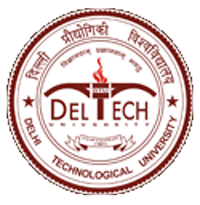Please use this identifier to cite or link to this item:
http://dspace.dtu.ac.in:8080/jspui/handle/repository/21448| Title: | EXPERIMENTAL INVESTIGATIONS IN FRICTION STIR WELDING OF NON FERROUS DISSIMILAR MATERIALS |
| Authors: | MOURIA, PRADEEP KUMAR |
| Keywords: | FRICTION STIR WELDING NON FERROUS DISSIMILAR MATERIALS FRICTION STIR WELDING (FSW) IMC |
| Issue Date: | Dec-2024 |
| Series/Report no.: | TD-7761; |
| Abstract: | Friction Stir Welding (FSW) has emerged as a revolutionary solid-state welding technique, exhibiting exceptional promise for joining non-ferrous materials with dissimilar compositions. This research aims to advance the understanding and application of FSW in the context of dissimilar non-ferrous materials. The study involves a systematic experimental investigation, encompassing a diverse range of non-ferrous alloys. The primary objectives include unraveling the intricate dynamics of the FSW process when applied to dissimilar materials, optimizing key welding parameters, and evaluating the resulting microstructural evolution. The research also delves into the mechanical properties of the welded joints, with a specific focus on the influence of dissimilarity between materials on the overall weld quality. The influence of three different pin profiles (square, triangular, and threaded circular pin profile) on the metallurgical characterization of the friction stir welded joints of AZ91D and AA2024 was analyzed. Among the different pin profiles, the square pin profile revealed the most favorable joint properties in terms of both mechanical and metallurgical behavior. Conversely, the joint fabricated with the triangular pin profile exhibited the lowest tensile properties. The intermetallic compounds (IMCs) tended to migrate toward the weld surface adjacent to the AZ91D plate, potentially resulting in constitutional liquation during solidification. To minimize the effect of these IMCs, different types of tool pin were used and observed that the square pin profile results in defect-free joints. The optimal welding parameters for achieving a sound weld were determined to be a traverse speed (TS) of 35mm/min and an RTS of 700 r/min. The presence of two specific intermetallic phases, Al3Mg2 and Al12Mg17, was observed in all joints, with Al12Mg17 showing a tendency to migrate toward the weld surface adjacent to the AZ91D plate, possibly resulting in constitutional liquation during solidification. The results revealed that the morphological characteristics and input heat significantly influenced the formation of IMCs. The anticipated outcomes of this study are expected to contribute significantly to the body of knowledge surrounding FSW of non-ferrous dissimilar materials. The insights gained will optimize FSW processes for better joint integrity in diverse industries. This research aims to bridge gaps in FSW knowledge, advancing the welding of dissimilar non-ferrous materials and expanding its industrial use. |
| URI: | http://dspace.dtu.ac.in:8080/jspui/handle/repository/21448 |
| Appears in Collections: | Ph.D. Mechanical Engineering |
Files in This Item:
| File | Description | Size | Format | |
|---|---|---|---|---|
| PRADEEP KUMAR MOURIA Ph.D..pdf | 9 MB | Adobe PDF | View/Open |
Items in DSpace are protected by copyright, with all rights reserved, unless otherwise indicated.



